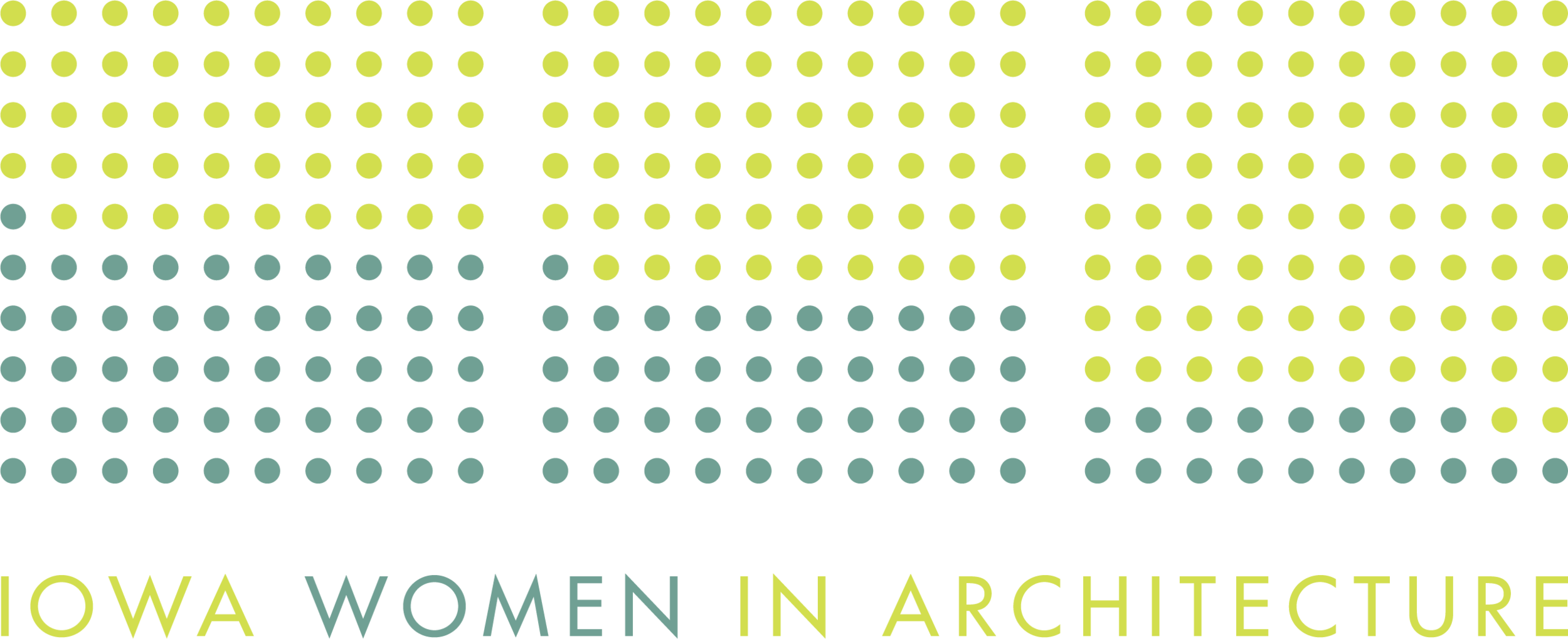Iowa Women in Architecture (iaWia) at AIA 2016 National Convention
Iowa Women in Architecture (iaWia) at AIA 2016 National Convention, Philadelphia PA, 18-21 May 2016
Iowa Women in Architecture (iaWia) members Anna Jones, Assoc. AIA (Past Chair, iaWia) and Ann Sobiech Munson, AIA CSI CCS (co-founder and Past Chair, iaWia) attended the American Institute of Architects (AIA) national convention in Philadelphia to present a workshop on behalf of iaWia. The workshop was selected to be part of the program as a result of a two-part peer review process; in addition, it was promoted by the Equity Alliance as part of a curated collection of sessions related to equitable practice in architecture.
Workshop
The workshop, titled “Attract, Retain, Engage, Promote: Recommendations for Equitable Practices in Architecture” and held Friday afternoon, May 20, focused on presenting iaWia’s Best Practice Recommendations for the Design Profession (BPR) and its associated tools and initiatives. An overview of the document, the case study initiative, and the survey tools, paired with some audience polling, led to small group discussion centered on participant-led issues and how the BPR might be used to address them. Approximately 70 people attended the workshop. After the workshop, eight hard copies of the document were purchased, and a number of follow-up conversations regarding iaWia’s future involvement in additional state conventions and national outreach were begun.
Additional Exposure
An earlier workshop in the convention, attended by several hundred people on Thursday May 19, presented the business case for women in architecture via a panel discussion (“Establishing the Business Case for Women in Architecture”). Amy Kalar AIA, a 2016 AIA Young Architect Award recipient from Minnesota and author of the archimom blog, moderated the panel; panelists included Kate Schwennsen FAIA (Clemson University, Clemson SC), Carole Wedge FAIA LEED AP (Shepley Bullfinch, Boston MA), and Emily Grandstaff-Rice FAIA (Arrowstreet, Boston MA). During the session, questions were raised about resources or “toolkits” to improve gender parity in practice, and a hard copy of iaWia’s BPR document was cited (and waved around on stage) multiple times. We estimate a hundred iaWia business cards were distributed to attendees as they exited the session.
Ann Sobiech Munson also moderated another session included in the curated Equitable Practice seminar collection, “Future Firm Culture: Defining a Path to Success.” Attended by approximately 300 people, the session was sponsored by the AIA Young Architects Forum (YAF). Three panelists discussed firm culture in relationship to design philosophy; people; business and transparency; and challenges and opportunities. While the session did not address iaWia directly, the examples raised about purposefully designing a practice related to iaWia’s work, and some iaWia cards were distributed as a result of the session.
At a third event, Mindy Aust AIA (former AIA Liaison for iaWia, current AIA Iowa Chapter President), Anna Jones, and Ann Sobiech Munson attended the Equity by Design (EQxD) Happy Hour on Wednesday, May 18. They were able to thank Lanny McIntosh for his generous support of iaWia’s Women in Architecture exhibit project last fall and connect with members from women in architecture groups based in Minnesota, Oklahoma, and California. Among these contacts were Rosa Sheng AIA (Bohlin Cywinski Jackson, San Francisco CA and founder, The Missing 32%) a major leader in the national conversation on equity in design; Karen Lu AIA (HGA, Minneapolis MN) and Amy Kalar AIA (RSP, Minneapolis MN), both 2016 Young Architect Award recipients and active in Women in Architecture Minnesota; and a group of young women from Oklahoma who are just starting their own women in architecture group and are seeking advice.
Summary
70 convention attendees gained hands-on experience using iaWia’s BPR. We estimate an additional 400-500 attendees heard about iaWia and its work with the BPR cited in another workshop. We continued or began specific conversations that may lead to collaboration or resource-sharing with women in architecture groups from Minnesota, Salt Lake City, and Oklahoma. And we were invited to explore the possibility of linking our work on the BPR to the national AIA website.

